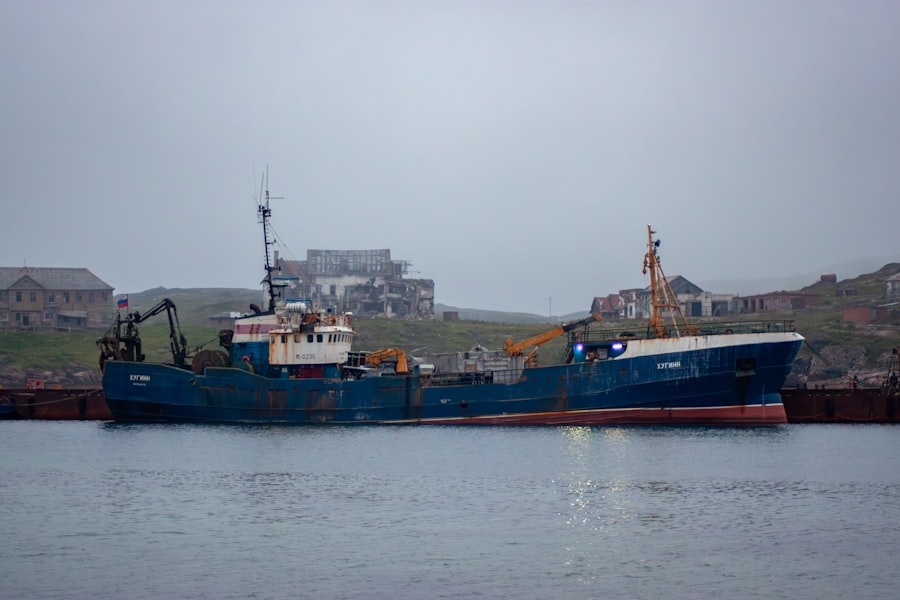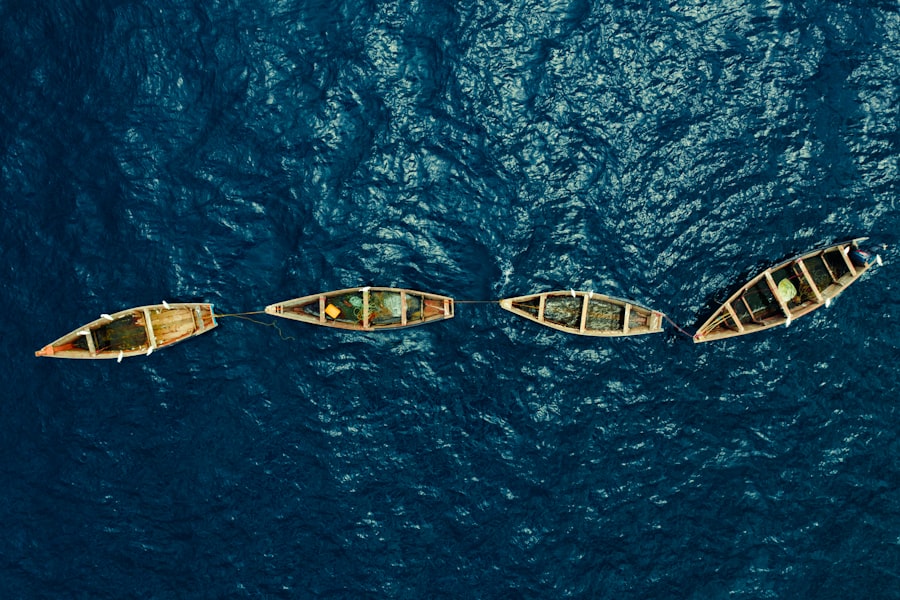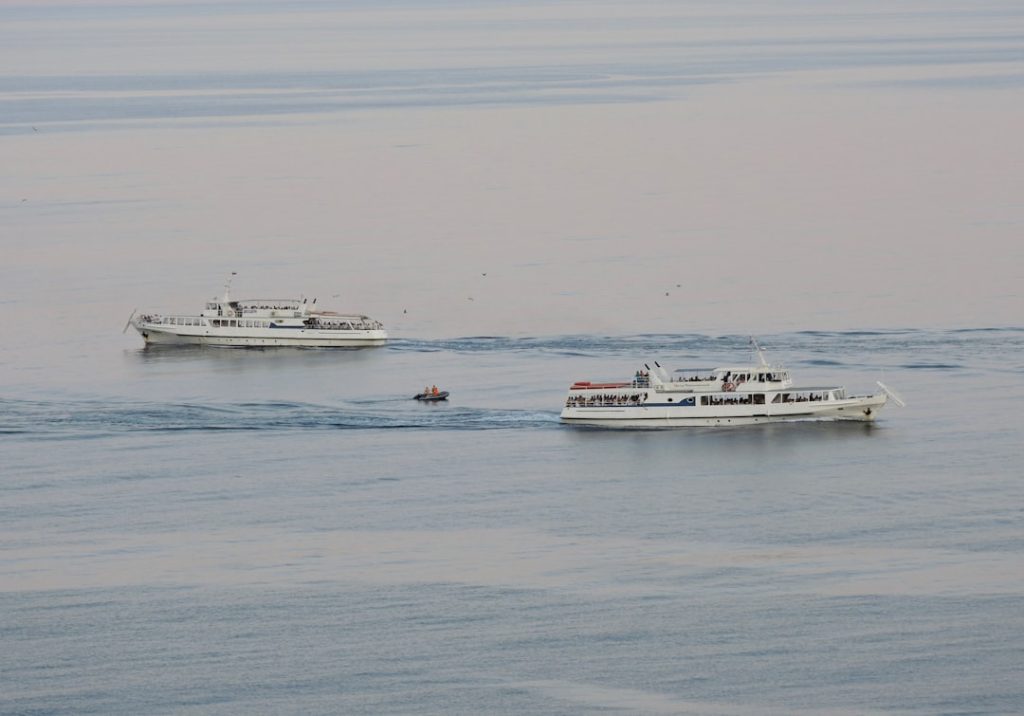Trawler boats have long been a staple in the maritime world, known for their robust design and practical functionality. Originating from the fishing industry, these vessels were initially crafted for trawling, a method of fishing that involves dragging nets through the water to catch fish. Over time, the design and purpose of trawler boats have evolved, making them popular among recreational boaters and long-distance cruisers.
Their distinctive hull shape, characterized by a full displacement design, allows for efficient fuel consumption and stability in various sea conditions. This makes them particularly appealing for those who wish to explore coastal waters or embark on extended voyages. The appeal of trawler boats extends beyond their utilitarian roots.
They are often equipped with spacious living quarters, making them suitable for extended stays at sea. Many modern trawlers come with amenities such as full kitchens, comfortable sleeping areas, and even entertainment systems, transforming them into floating homes. This blend of functionality and comfort has led to a growing community of trawler enthusiasts who appreciate the lifestyle that comes with owning such a vessel.
As we delve deeper into the world of trawler boats, we will explore their advantages, types, navigation techniques, safety measures, maintenance tips, and their environmental impact.
Key Takeaways
- Trawler boats are designed for long-distance cruising with fuel efficiency and comfort.
- They offer advantages such as stability, spacious living areas, and economical operation.
- Various types include coastal, offshore, and expedition trawlers tailored to different needs.
- Proper navigation and safety measures are essential for safe and effective trawler operation.
- Regular maintenance and environmental awareness help ensure longevity and reduce ecological impact.
Advantages of Trawler Boats
One of the most significant advantages of trawler boats is their fuel efficiency. Unlike speedboats or yachts that require powerful engines to achieve high speeds, trawlers are designed for slow cruising. This slower pace not only conserves fuel but also allows for a more leisurely exploration of coastal areas and inland waterways.
For instance, a typical trawler can achieve a cruising speed of around 6 to 8 knots while consuming significantly less fuel than faster vessels. This efficiency translates into longer journeys without the constant need to refuel, making trawlers ideal for long-distance cruising. Another notable advantage is the stability that trawler boats offer.
Their full displacement hulls provide a low center of gravity, which enhances stability in rough waters. This characteristic is particularly beneficial for those who may be prone to seasickness or for families with children. The design allows for a smoother ride, reducing the likelihood of sudden jolts or tipping in choppy conditions.
Additionally, many trawlers are equipped with stabilizers that further enhance their ability to handle waves and swells, ensuring a comfortable experience for all onboard.
Types of Trawler Boats

Trawler boats come in various types, each designed to cater to different needs and preferences. One common type is the displacement trawler, which is characterized by its heavy hull and slower speeds. These vessels are perfect for long-distance cruising and are often favored by those who prioritize comfort over speed.
Displacement trawlers typically have larger fuel tanks and can travel great distances without needing frequent stops. Another popular type is the semi-displacement trawler. These boats combine features from both displacement and planing hulls, allowing them to achieve higher speeds while still maintaining some of the stability associated with traditional trawlers.
Semi-displacement trawlers are versatile and can be used for both leisurely cruising and more adventurous outings. They often appeal to boaters who want the best of both worlds—speed when needed and comfort during longer journeys. Lastly, there are also expedition trawlers designed specifically for long-range cruising in remote areas.
These vessels are built to withstand harsh conditions and often come equipped with advanced navigation systems and robust construction materials. Expedition trawlers are ideal for adventurous souls looking to explore uncharted territories or navigate through challenging waters.
Navigating Techniques for Trawler Boats
| Navigation Technique | Description | Typical Usage | Advantages | Limitations |
|---|---|---|---|---|
| Radar Navigation | Using radar to detect other vessels, landmasses, and obstacles. | Nighttime and low visibility conditions. | Effective in poor visibility; real-time obstacle detection. | Limited range; can be affected by weather conditions. |
| GPS Navigation | Satellite-based positioning system providing accurate location data. | All weather conditions; primary navigation tool. | High accuracy; easy to use; real-time tracking. | Dependent on satellite signals; possible signal loss. |
| Dead Reckoning | Estimating current position based on speed, time, and course from last known position. | When GPS or other electronic aids fail. | Simple; no equipment needed. | Accumulated errors over time; less accurate. |
| Sonar (Echo Sounder) | Using sound waves to measure water depth and detect underwater obstacles. | Shallow waters and fishing operations. | Helps avoid grounding; locates fish and underwater features. | Limited range; affected by water conditions. |
| Visual Navigation | Using landmarks, buoys, and charts to determine position. | Daytime and clear weather conditions. | No equipment needed; reliable in familiar waters. | Not usable at night or in poor visibility. |
| Automatic Identification System (AIS) | Transmits and receives vessel information to avoid collisions. | Busy shipping lanes and ports. | Improves situational awareness; collision avoidance. | Dependent on other vessels having AIS; signal interference. |
Navigating a trawler boat requires a unique set of skills and techniques that differ from those used in faster vessels. One essential technique is understanding the principles of slow-speed maneuvering. Trawlers are not built for quick turns or rapid acceleration; instead, they require gentle handling to maintain control.
Boaters should practice using their throttle and rudder in tandem to achieve smooth turns and stops. This can be particularly important when docking or navigating through narrow channels where precision is key. Another critical aspect of navigation is understanding tidal currents and weather patterns.
Trawlers often operate in coastal waters where tides can significantly affect movement. Knowledge of local tides can help boaters plan their journeys more effectively, ensuring they take advantage of favorable currents rather than fighting against them. Additionally, being aware of weather conditions is vital; trawlers may not handle severe weather as well as larger vessels, so planning routes that avoid storms or rough seas is essential for safety.
Safety Measures for Trawler Boats
Safety should always be a top priority when operating a trawler boat. One fundamental safety measure is ensuring that all safety equipment is onboard and in good working condition. This includes life jackets, flares, fire extinguishers, and first aid kits.
Regularly checking these items can make a significant difference in emergency situations. Additionally, it’s crucial to have a well-thought-out emergency plan that includes communication protocols and procedures for various scenarios. Another important safety consideration is maintaining situational awareness while on the water.
Trawler operators should always be vigilant about their surroundings, keeping an eye out for other vessels, navigational hazards, and changing weather conditions. Utilizing modern technology such as radar systems and GPS can enhance situational awareness significantly. These tools provide real-time information about nearby objects and help in plotting safe courses through unfamiliar waters.
Maintenance Tips for Trawler Boats

Proper maintenance is essential for ensuring the longevity and performance of a trawler boat. One key aspect of maintenance is regular engine checks. Trawlers often rely on diesel engines that require routine inspections to ensure they are running efficiently.
This includes checking oil levels, fuel filters, and coolant systems regularly. Keeping up with these checks can prevent costly repairs down the line and ensure that the vessel operates smoothly during voyages. Another critical maintenance task involves the hull and exterior of the boat.
Regular cleaning and inspections can help identify any signs of wear or damage early on. For instance, barnacles or algae growth can affect the boat’s performance by increasing drag in the water. Applying anti-fouling paint can help mitigate this issue by preventing marine growth on the hull.
Additionally, inspecting seals and fittings regularly can prevent leaks and other water intrusion issues that could compromise the vessel’s integrity.
Environmental Impact of Trawler Boats
The environmental impact of trawler boats is an increasingly important topic as awareness of marine conservation grows. Traditional fishing practices associated with trawlers can lead to overfishing and habitat destruction if not managed sustainably. For example, bottom trawling can damage seafloor ecosystems by disrupting habitats critical for various marine species.
As such, many regions have implemented regulations to limit fishing practices that harm the environment. On the other hand, recreational trawlers can also contribute positively to marine conservation efforts by promoting eco-friendly practices among boaters. Many modern trawlers are designed with fuel efficiency in mind, which reduces their carbon footprint compared to larger vessels that consume more fuel per mile traveled.
Additionally, some manufacturers are exploring alternative energy sources such as solar panels or hybrid systems to further minimize environmental impact.
The Future of Trawler Boats
As we look toward the future of trawler boats, it is clear that innovation will play a significant role in shaping their evolution. Advances in technology are likely to lead to more efficient engines and eco-friendly materials that reduce environmental impact while enhancing performance. Furthermore, as more people seek sustainable ways to enjoy recreational boating, there may be an increased demand for trawlers designed with conservation in mind.
The community surrounding trawler boats continues to grow as enthusiasts share their experiences and knowledge through forums and social media platforms. This exchange fosters a culture of learning and improvement among boaters, encouraging best practices in navigation, safety, and maintenance. As this community expands, it will undoubtedly influence the future design and functionality of trawler boats, ensuring they remain relevant in an ever-changing maritime landscape.
In summary, trawler boats represent a unique blend of tradition and modernity within the boating world. Their advantages in fuel efficiency and stability make them appealing for both recreational use and long-distance cruising. As we navigate through challenges such as environmental sustainability and technological advancements, the future of trawler boats looks promising—offering endless opportunities for exploration on the open water while fostering a deeper connection with our marine environments.


